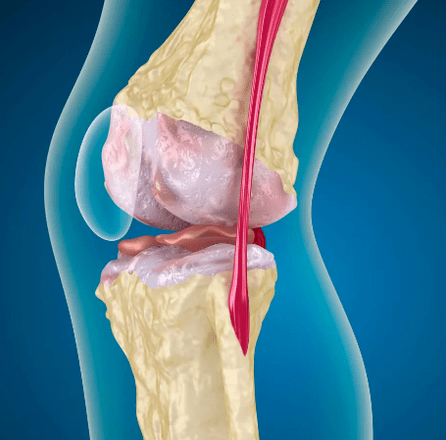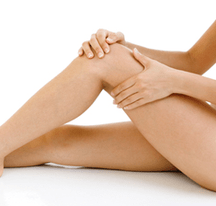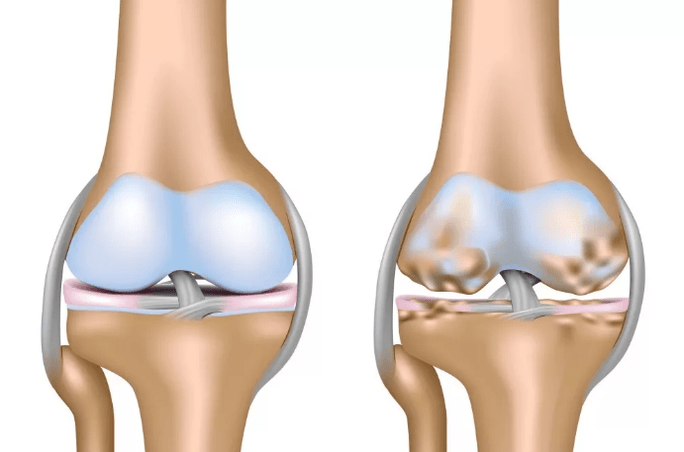Articity of the knee joint is a very common disease in which many anatomical changes in joint tissue are observed due to the patient's metabolic disease (primary arthritis), infectious arthritis and injury (secondary arthritis).
Symptoms and degrees of knee joints
With the joints of the primary knee joint, joint movement has been restricted in one direction and to a certain extent.With the action of this joint, the joint will not swell, the skin color in the joint will not change, and the temperature reaction will not exist.In this case, the main symptoms are joints, and the pain of tingling and tightening is weak, and tightening can also be observed in the joints.

With the joint nature of the secondary knee joint and the joints of the shoulder joints, the symptoms are more obvious.This type of arthritis is the most common.Patients with secondary disease usually complain about fatigue, feeling the pressure and tension of the joints, complain about pain during and after physical labor, joint pain after and during lifting weights, fatigue and pain, long walking.Similarly, secondary articulation symptoms are difficulties in crust in the knee joint, knee flexion/extension.With secondary articular joints, the joint begins to deform.
The symptoms of third degree arthritis are joint pain, which is very sharp, which can cause inconvenience to the patient even when resting.A person cannot choose a convenient position, so it is difficult for him to fall asleep at this stage of the disease.Damaged joints tend to show responses to weather changes, with the joints barely curved.
Treat the joints of the knee joints
You can treat knee joint arthritis with non-replacement anti-inflammatory drugs.Because of the nonsteroidal joint nature, i.e. not hormones, anti-inflammatory drugs are traditionally used to eliminate inflammation and pain, because treatment cannot be started due to severe pain.You can only massage after the pain is eliminated with anti-inflammatory drugs, a series of therapeutic exercises and physical therapy procedures.
However, this medication should not be used for a long time, as they can "mask" the manifestations of the disease, or relieve symptoms as the doctor says.When the pain is relieved, the deceptive impression is created that the joints begin to heal.Arthritis continued to move forward at that time.Therefore, NSAID can eliminate symptoms of the disease rather than treat it.
You can also use cartilage protectors in joint treatment.Cartilage protectors are substances that feed cartilage tissue and restore structures of damaged joints.These are the most useful medicines for treating joints.
Cartilage protectors have the ability to eliminate the causes of the disease.When drugs such as chondroitin sulfate and glucosamine are used, recovery of the cartilage surface of the joint is observed, and the production of lubricant fluid is improved and its normalization of its properties.
Among other things, you should use therapeutic creams and ointments to treat arthritis.Ointments and facial creams do not cure arthritis in the knee joint, but they can reduce knee pain and improve the patient's condition.Likewise, many ointments help improve blood circulation in the joints.

To improve blood circulation in the knee joint, you should use ointment.With this ointment, patients will gain comfortable and pleasant calories.There will be no side effects (very few exceptions).
Similarly, non-replacement anti-inflammatory ointments should be used to treat joint properties of the knee joint.This ointment was used when synovitis deepened adenocarcinoma.
Don't ignore all types of compression.After all, money.Unlike ointments, it is used for compression and has a more effective therapeutic effect.
You cannot ignore the injection (-intra-articular).
In the case of knee arthritis, internal injection was used.Such methods are not usually recommended, for example, usually it is necessary to resort to intra-articular injections, as injections can greatly promote the patient's condition.And, don't forget that it is necessary to consult a doctor even if you use a vulnerable drug.
Physical therapy and manual therapy are also recommended.These treatments do not actually have side effects, so they are preferable.
Manual therapy for joint therapy for the first and second-level joints is recommended to produce very effective positive results.
Many doctors also recommend treatment for gymnastics.In order to strengthen muscles, pump blood vessels, and restore blood flow to the maximum capacity, treatment for gymnastics is needed.The sum of this treatment is that you don't need to spend money on various medications.You will need a small place in the room, carpet or blanket on the floor.
Certain types of gymnastics exercises can help you deal with the disease: lifting straight legs in a lying position; fighting and bending of the knee joints does not reach the lie.
Exercises for treating knee joints:

Deformed knee joints
During the changes in cartilage tissue, the disappearance of the hyaline cartilage can be fully observed, thus, the bones are exposed, growing along the surroundings, and the formation of bone diseases is observed.Therefore, the knee becomes deformed and a disease occurs, such as the deformed joint of the knee joint.
In this case, conservative and operational methods are allowed.
Conservative treatments include imposing restrictions on the body of the affected joint, swimming, physical therapy exercise, use of medications (nonsteroid anti-inflammatory drugs, analgesics, corticosteroids and other medications).
Surgical treatment involves arthroscopy (which is endoscopic treatment and diagnostic surgery).In this case, damaged fragments of cartilage, meniscus and other damaged structures will be removed.















































